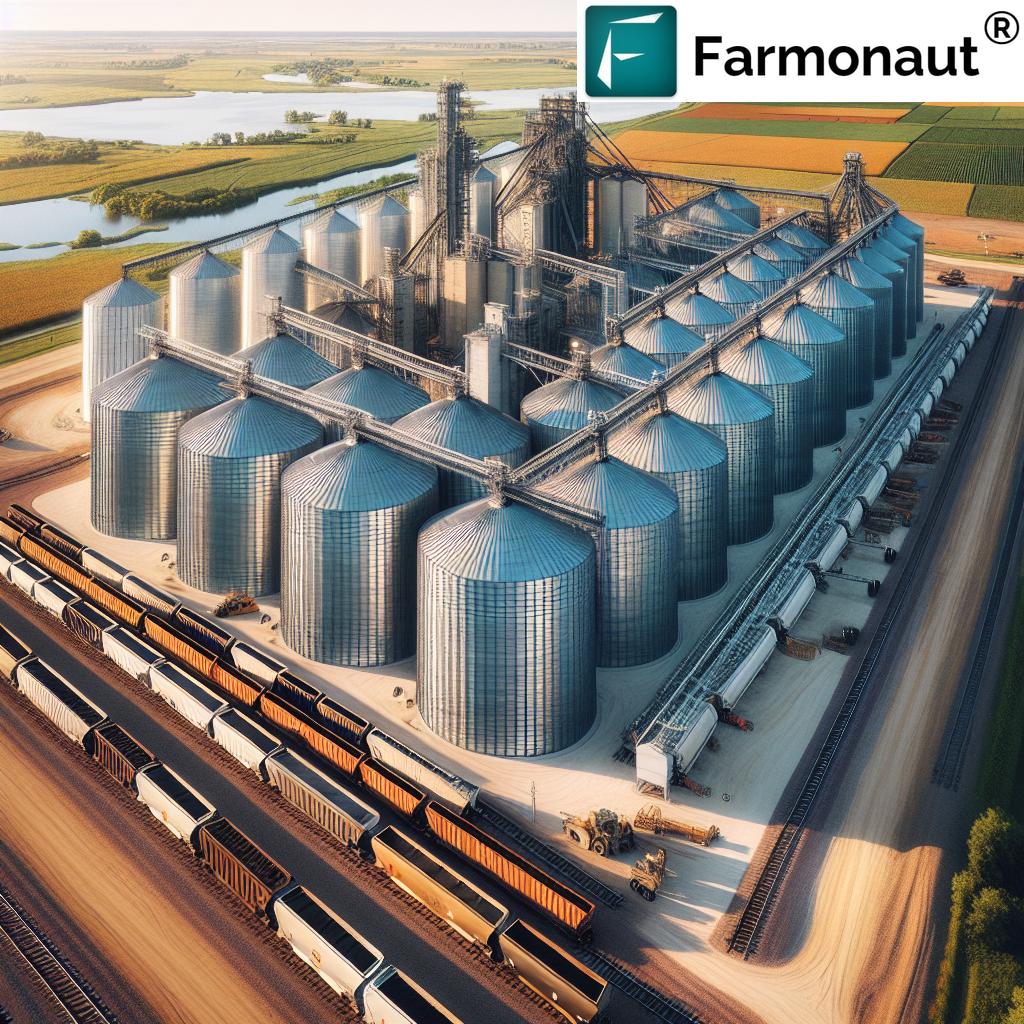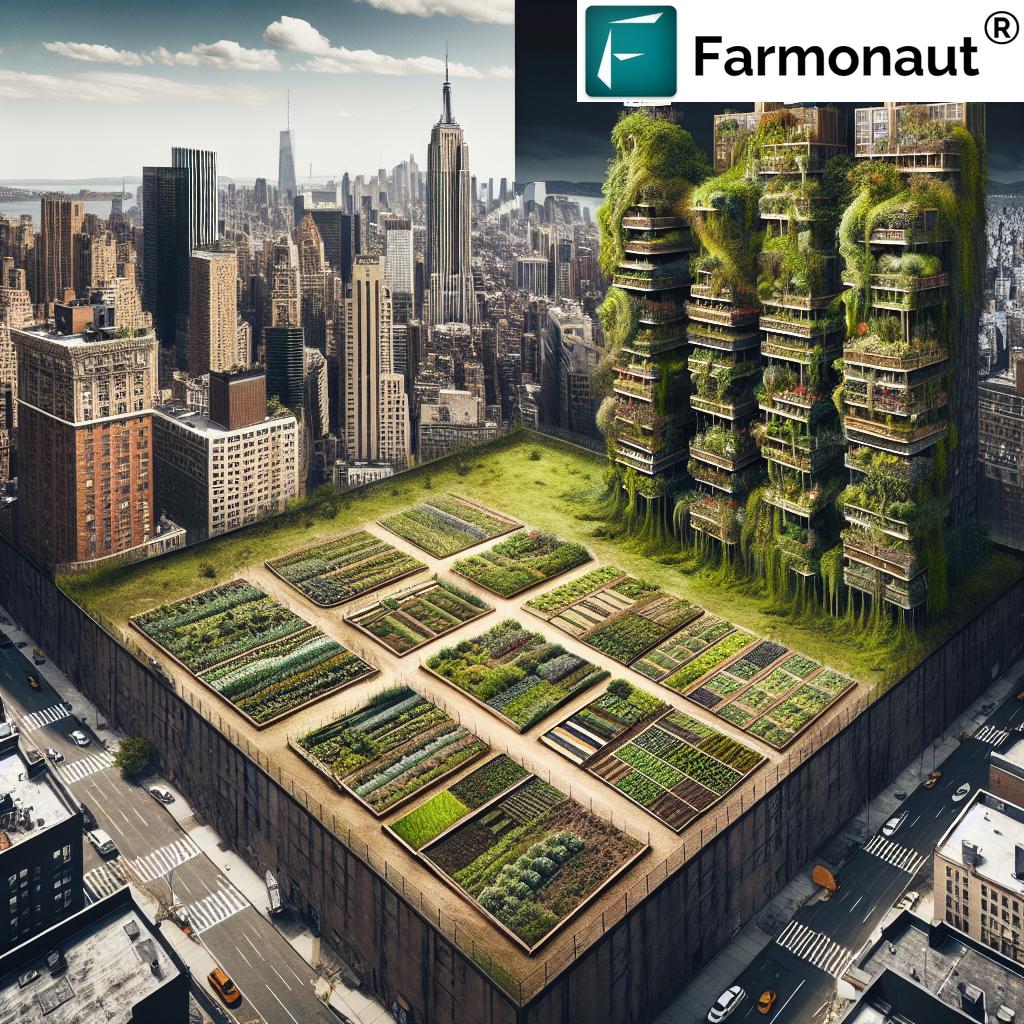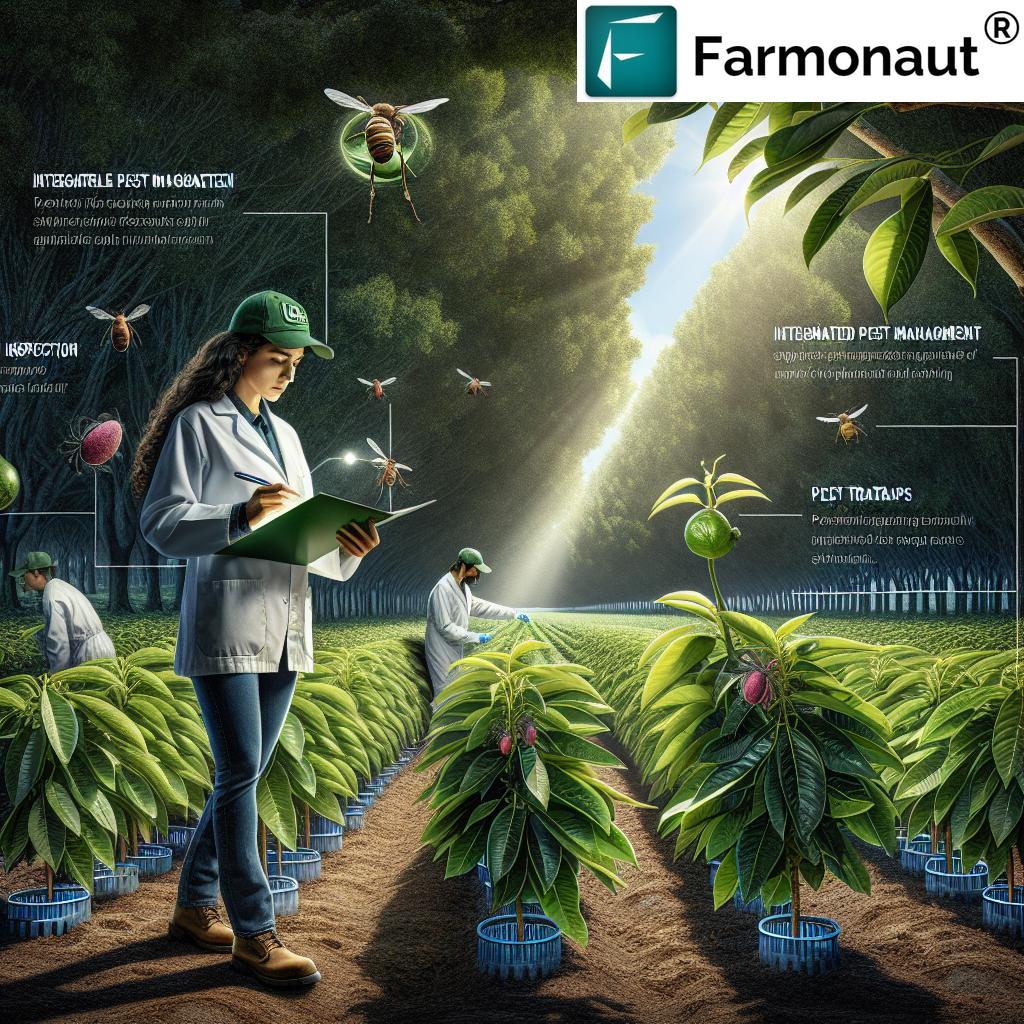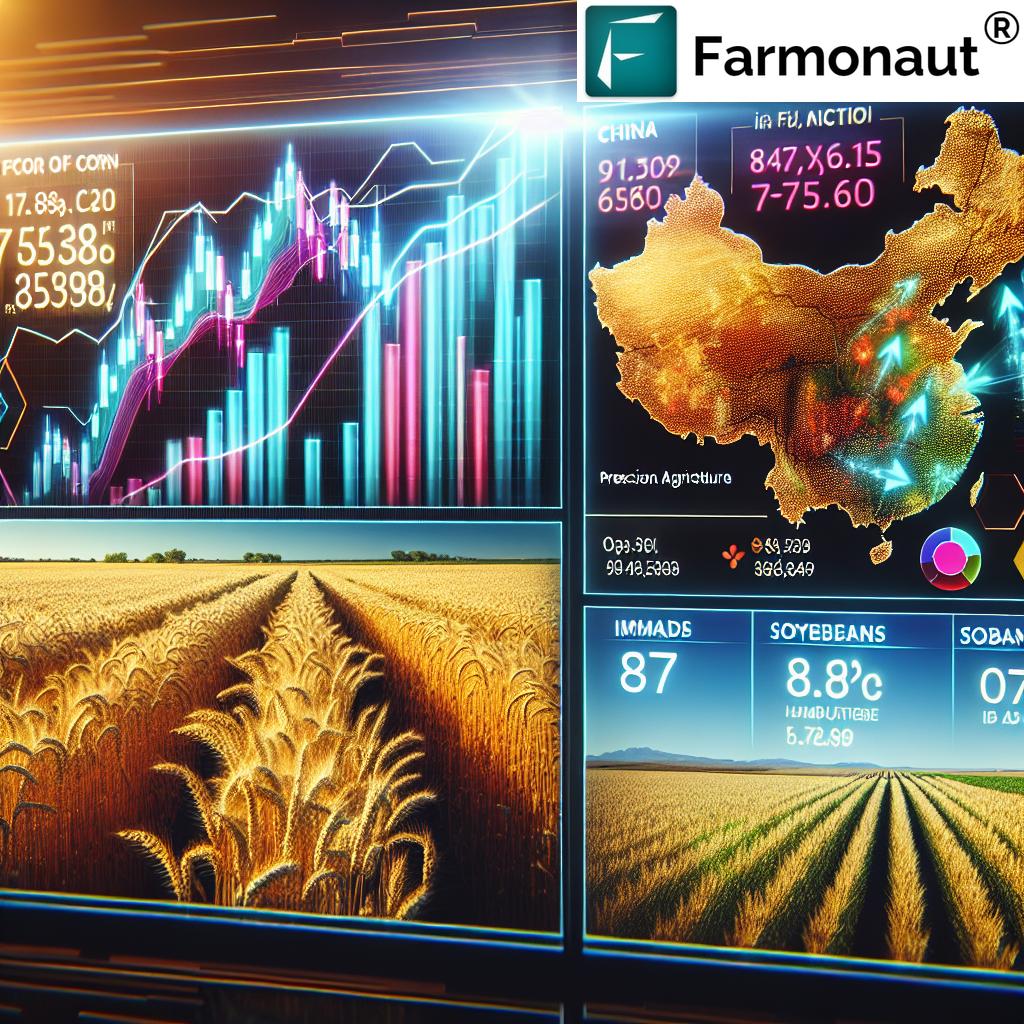AI Projects in Agriculture: Reforestation Projects in US (2025 & Beyond)
“Over 1.3 million acres in the US are targeted for AI-driven reforestation projects by 2025.”
“AI-powered carbon credit initiatives in US agriculture are projected to offset 2.5 million metric tons of CO2 annually.”
Table of Contents
- Introduction: The Role of AI and Carbon Credit Projects in Reforestation
- Carbon Credit Projects & Reforestation: The Symbiotic Relationship
- Current Landscape of Reforestation Projects in US (2025 & Beyond)
- How AI Projects in Agriculture Drive Carbon Credit Projects
- Comparative Overview Table: Major US AI-Powered Reforestation Initiatives
- The Technology Ecosystem: Satellites, Drones, and Monitoring
- Agroforestry & Agricultural Integration: Broadening the Impact
- How Farmonaut Empowers Sustainable Reforestation Projects
- Challenges, Considerations, and the Future Outlook
- Frequently Asked Questions (FAQ)
- Conclusion: Towards a Carbon-Neutral, AI-Enhanced Future
Introduction: The Role of AI and Carbon Credit Projects in Reforestation
In 2025 and the years to come, the confluence of AI projects in agriculture, reforestation projects, and carbon credit projects in the United States is shaping one of the most powerful strategies to fight climate change. By combining the restoration of our forests with incentives for planting trees for carbon credits, we are advancing sustainable land use, unlocking new environmental and economic opportunities, and working towards global emissions targets.
This blog dives deep into how reforestation projects in US are integrating advanced AI and digital tools, focusing on how these technologies are reshaping the forestry sector, supporting farmers, and fostering transparency and scalability within the carbon credit market.
Carbon Credit Projects & Reforestation: The Symbiotic Relationship
At their core, carbon credit projects revolve around quantifying and monetizing reductions in greenhouse gas emissions. Forests, as natural carbon sinks, absorb CO2 through photosynthesis, sequestering enormous amounts of carbon within their biomass and soil. Therefore, reforestation projects—the strategic planting of trees on deforested or degraded lands—directly increase this sequestration capacity.
How Carbon Credit Projects Work
- Carbon credit units represent one metric ton of CO2 (or other equivalent greenhouse gas) that has been sequestered, avoided, or reduced.
- Reforestation projects (especially in the United States) restore forest cover and are monitored to calculate how much carbon gets sequestered as trees mature.
- These credits are then sold in carbon markets to entities needing to offset their emissions, translating environmental benefit directly into economic incentive.
In 2025, such reforestation projects are not only helping offset emissions from industrial and urban centers but also restoring biodiversity, improving soil health, enhancing water conservation, and supporting rural economies.
Current Landscape of Reforestation Projects in US (2025 & Beyond)
As governments and private entities ramp up efforts to meet global climate targets, the US has seen a tremendous expansion of reforestation initiatives over recent years. Both public agencies and the private sector are actively implementing programs designed to scale up tree planting across degraded lands, forestlands, buffer zones, and marginal agricultural areas.
Policy & Funding Catalysts
- The Growing Climate Solutions Act has created crucial support mechanisms for landowners, farmers, and private foresters to participate in carbon markets, providing technical assistance and simplified verification processes.
- Numerous state-led and federal programs are combining public funds with private investment to ramp up large-scale reforestation projects in US.
Ecological & Community Benefits
- Biodiversity restoration: Planting a diverse mix of native species rebuilds habitats.
- Soil improvement: Trees stabilize degraded soils, reduce erosion, and renew fertility.
- Water conservation & improvement: Roots filter runoff, recharge groundwater, and regulate flows.
- Community involvement: Projects create employment, investment, and a sense of stewardship.
Reforestation Projects in US: Who’s Leading?
The US is home to a wide range of reforestation projects, with major initiatives led by non-profits, private timber companies, farmer cooperatives, conservation organizations, and tech-driven startups leveraging AI and satellite technology.
How AI Projects in Agriculture Drive Carbon Credit Projects
The integration of AI technology within reforestation projects in US and carbon credit projects is a game-changer, especially for sustainable agriculture and forestry. As demand for accurate, large-scale monitoring has intensified, AI-driven analytics and satellite monitoring are now central to quantifying carbon sequestration and verifying project impact. Let’s examine how:
Key Roles AI Plays in Carbon Credit & Reforestation
- Automated tree detection and survival analysis (via drones/satellites): Precisely counts planted trees and tracks survival rates to ensure carbon credits reflect actual growth.
- Growth modeling: Machine learning models predict biomass growth, soil carbon increases, and overall carbon sequestration based on local conditions and climate projections.
- Optimized planning: AI recommends ideal tree species, planting densities, and land use strategies based on site-specific climate, soil, and water conditions.
- Remote sensing & real-time monitoring: Tools detect illegal logging, disease outbreaks, fire risks, and meteorological changes, helping to manage permanence risks for carbon credits.
- Streamlined verification & reporting: Blockchain and AI together simplify third-party verification, reducing costs and increasing trust for investors and regulators.
Our Carbon Footprinting Tool enables precise monitoring, benchmarking, and reporting of carbon emissions and sequestration—whether you run forestry, agriculture, or land management projects. Tap into affordable satellite insights to maximize impact and eligibility for carbon credits.
Comparative Overview Table: Major US AI-Powered Reforestation Initiatives
| Project Name | Location | AI Technology Used | Estimated Area Reforested (acres) | Estimated Carbon Credits Generated (tons CO₂e) | Year Started | Project Impact |
|---|---|---|---|---|---|---|
| GreenHeart AI Forest Regeneration | California, Oregon, Washington | Satellite-based AI tree detection, drone imaging, machine learning growth prediction | 150,000 | 375,000 | 2022 | Wildfire restoration, resilient ecosystem restoration, creates credits for tech/energy companies |
| AgroAI Land Carbon Partnership | Iowa, Minnesota, Illinois | Crop & tree species recommendation engine, satellite carbon estimation | 120,000 | 215,000 | 2023 | Agroforestry integration, farmer participation, boosts acreage under permanent cover |
| East Coast River Forests (AI Enriched) | Maryland, Virginia, North Carolina | Blockchain-based monitoring, NDVI, remote sensing, AI-driven reports | 100,000 | 170,000 | 2021 | Prioritizes waterway buffer restoration for water quality and biodiversity |
| Southwest Drought Recovery Reforestation | New Mexico, Arizona, Texas | Drones for seed dispersal, AI survival prediction, climate-adjusted planting | 90,000 | 112,000 | 2024 | Addresses drought-resiliency, native species, long-term carbon capture |
| Appalachian Carbon Link | West Virginia, Kentucky | Automated biomass analytics, remote verification, blockchain smart contracts | 70,000 | 100,000 | 2022 | Restores mined land, empowers local economies, ensures long-term carbon credit delivery |
| Northern Prairie ReTree Initiative | Nebraska, South Dakota, Kansas | ML-based land suitability predictions, satellite monitoring | 50,000 | 60,000 | 2024 | Transforms marginal croplands, increases habitat connectivity, rural carbon credits |
Note: Figures are based on public estimates and current trends for AI integration in reforestation projects in US.
The Technology Ecosystem: Satellites, Drones, and Monitoring
Technological advancements have fundamentally changed how carbon credit projects and reforestation projects are designed, tracked, and verified. In light of the challenges posed by large-scale land areas and subtle differences in forest health or biomass, **AI**, **satellites**, and **drones** work in concert to support every phase of the project lifecycle, especially in the context of the United States for 2025 and beyond.
- Satellite-based monitoring: Enables continent-wide, high-frequency detection of land cover change, tree growth, and carbon sequestration updates.
- Drones: Provide ultra-high-resolution imagery, targeted surveillance for tree planting and disease detection, and automate seed dispersal over difficult terrain.
- AI-powered analytics: Process multimodal data to calculate actual carbon sequestered versus estimates, optimize field activities, and produce auditable carbon credit documentation.
- Blockchain: For secure, verifiable project traceability—an essential foundation for trust in carbon credit markets.
Farmonaut API lets organizations and developers access scalable satellite intelligence and agricultural monitoring, integrating AI- and satellite-powered reforestation and carbon monitoring directly into your existing digital platforms.
For customization, see our API Developer Docs.
Agroforestry & Agricultural Integration: Broadening the Impact of AI Projects in Agriculture
The integration of reforestation projects and modern agriculture systems can yield significant, long-lasting environmental and economic rewards, especially when leveraging AI-driven advisory and resource management tools.
What is Agroforestry?
Agroforestry is the deliberate, strategic combination of trees with crops and/or livestock on the same land. This system not only increases on-farm biodiversity but also strengthens carbon sequestration and soil restoration—directly contributing to carbon credit markets and fostering sustainable land management.
Key Benefits of AI-Powered Agroforestry
- Enhanced carbon credit potential: AI estimates how integrated trees and crops increase carbon removal, providing new revenue for landowners.
- Diversified farmer income: Greater crop/livestock resilience, product range, and carbon credit sales.
- Improved soil and water health: Trees improve soil structure and prevent erosion, while root systems enhance water infiltration, aided by real-time environmental data.
- Lower risk of project failure: AI’s adaptive management reduces mortality by matching species to changing site conditions, further secured by precise monitoring.
Large Scale Farm Management Solutions: Plan, monitor, and optimize agroforestry and reforestation efforts at scale using remote sensing, AI-powered environmental analysis, and data-driven reporting tools.
 Get Farmonaut for Android
Get Farmonaut for Android
 Farmonaut for iOS
Farmonaut for iOS
“AI-powered carbon credit initiatives in US agriculture are projected to offset 2.5 million metric tons of CO2 annually.”
How Farmonaut Empowers Sustainable Reforestation and Carbon Credit Projects
At Farmonaut, we’re committed to leveraging our advanced technologies to elevate the standards, reliability, and impact of AI projects in agriculture, reforestation projects, and the carbon credit sector—in the US and beyond. Our platform integrates satellite data, real-time environmental monitoring, AI-based advisory, blockchain traceability, and robust resource management tools to offer unmatched value.
- Satellite Monitoring & NDVI: We provide affordable, high-frequency satellite imagery for detecting landscape changes, vegetation health, and soil carbon. This is essential for verification and ongoing management of reforestation projects in US.
- AI Advisory (Jeevn AI): Our AI-based farm and forestry analytics system delivers real-time, site-specific recommendations to maximize tree survival, optimize planting schedules, and guide resource allocation, ensuring reforestation projects reach their full carbon sequestration and economic potential.
- Blockchain Traceability: Enables full documentation and transparency from planting to carbon credit certification, strengthening trust—a core requirement for carbon credit projects.
- Environmental Impact & Carbon Tracking: With carbon footprinting tools, we empower every project owner to benchmark, report, and optimize emissions reductions and CO2 sequestration.
- Fleet and Resource Optimization: Using our fleet management platform, forestry and agricultural businesses effectively manage logistics, reduce costs, and ensure sustainable project execution.
- Financial Access: Our satellite-based verification streamlines access to agricultural loans and insurance, reducing fraud and incentivizing sustainable agroforestry investments.
Read about our Traceability Solutions—Leverage blockchain for transparent documentation, from tree planting to carbon credit trade.
Forest & Crop Plantation Advisory—Get powerful, AI-driven recommendations for large-scale planting, project health, and compliance with carbon credit market standards.
Ready to Join the Future of Sustainable Land Management?
Challenges, Considerations, and the Future Outlook for Carbon Credit & Reforestation Projects
While adoption is accelerating and the potential is vast, there are still common challenges to scaling reforestation projects for carbon credit generation:
Major Challenges
- Land Tenure & Access: Ensuring clear ownership and long-term stewardship of project land is vital for permanence.
- Verification Complexity: Traditional, manual verification is slow and expensive; digital solutions and AI are critical to streamline this for large programs.
- Permanence Risks: Fire, drought, pests, or illegal logging can threaten forest carbon reserves. Real-time monitoring and contingency strategies become necessary.
- Policy Uncertainty: Shifting political landscapes can influence carbon market regulations and funding.
- Access to Private Capital & Incentives: Small landowners may struggle with up-front investment or navigating new carbon markets.
Future Outlook: Sustainable, Tech-Driven Growth (2025 & Beyond)
- Greater digital integration: Widespread use of satellite, drone, and AI tools for verification, reporting, and risk management.
- Growing policy support: Increased incentives, funding, and regulatory backing for combined reforestation and carbon credit projects.
- Scalable community-driven models: Stronger involvement of local communities and farmers, supported by fair access to carbon credit and tree planting revenue.
- Expansion of co-benefits: Integrated biodiversity, water quality, soil health, and climate resilience goals—beyond just CO2 metrics.
- Broader application of AI: Site-specific, predictive, and even autonomous systems for planting, monitoring, and adaptive management.
Frequently Asked Questions (FAQ) on Reforestation, Carbon Credits & AI in US Agriculture (2025)
1. What is a carbon credit, and how are they generated through reforestation?
A carbon credit represents the removal or reduction of one ton of CO2 (or its equivalent in other greenhouse gases) from the atmosphere. Reforestation projects generate these credits by planting trees that absorb and store carbon—quantified via periodic monitoring and verified according to international standards.
2. Why is AI important for reforestation and carbon credit projects in the US?
AI dramatically increases the accuracy and scalability of project planning, monitoring, and verification. It easily processes vast amounts of satellite, drone, and sensor data to:
- Monitor tree growth and carbon capture
- Predict project outcomes and risks
- Provide actionable advice for maximizing climate and economic benefits
3. How do farmers and small landowners participate?
Thanks to digital and policy advances (e.g., the Growing Climate Solutions Act), farmers in the US can now access carbon markets, get technical support to implement agroforestry, and utilize affordable remote monitoring and advisory tools for maximizing returns.
4. Is there a global standard for reforestation & carbon credit verification?
Yes. Most projects adhere to standards like the Verified Carbon Standard (VCS), Gold Standard, or American Carbon Registry. Emerging digital solutions—powered by AI and blockchain—streamline the process to ensure integrity.
5. What are common risks or challenges for US-based reforestation efforts?
Key risks include wildfire, drought, disputes over land ownership, fluctuating carbon market prices, and evolving regulatory frameworks. Advanced monitoring and robust risk management (like those powered by Farmonaut’s solutions) are vital for long-term project success.
Conclusion: Towards a Carbon-Neutral, AI-Enhanced Future for US Forests & Agriculture
The fusion of AI projects in agriculture, reforestation projects, and carbon credit projects is propelling the US toward a new era of sustainable land management and climate resilience for 2025 and beyond. By using powerful, data-driven, and accessible technologies, a future emerges where forestry and agriculture work in synergy to restore ecosystems, support rural economies, and combat climate change at scale—ensuring that environmental stewardship goes hand-in-hand with economic opportunity and technological progress.
By connecting innovation, transparency, and community-driven action, we can deliver impactful change for the planet—one project, one tree, and one carbon credit at a time.












